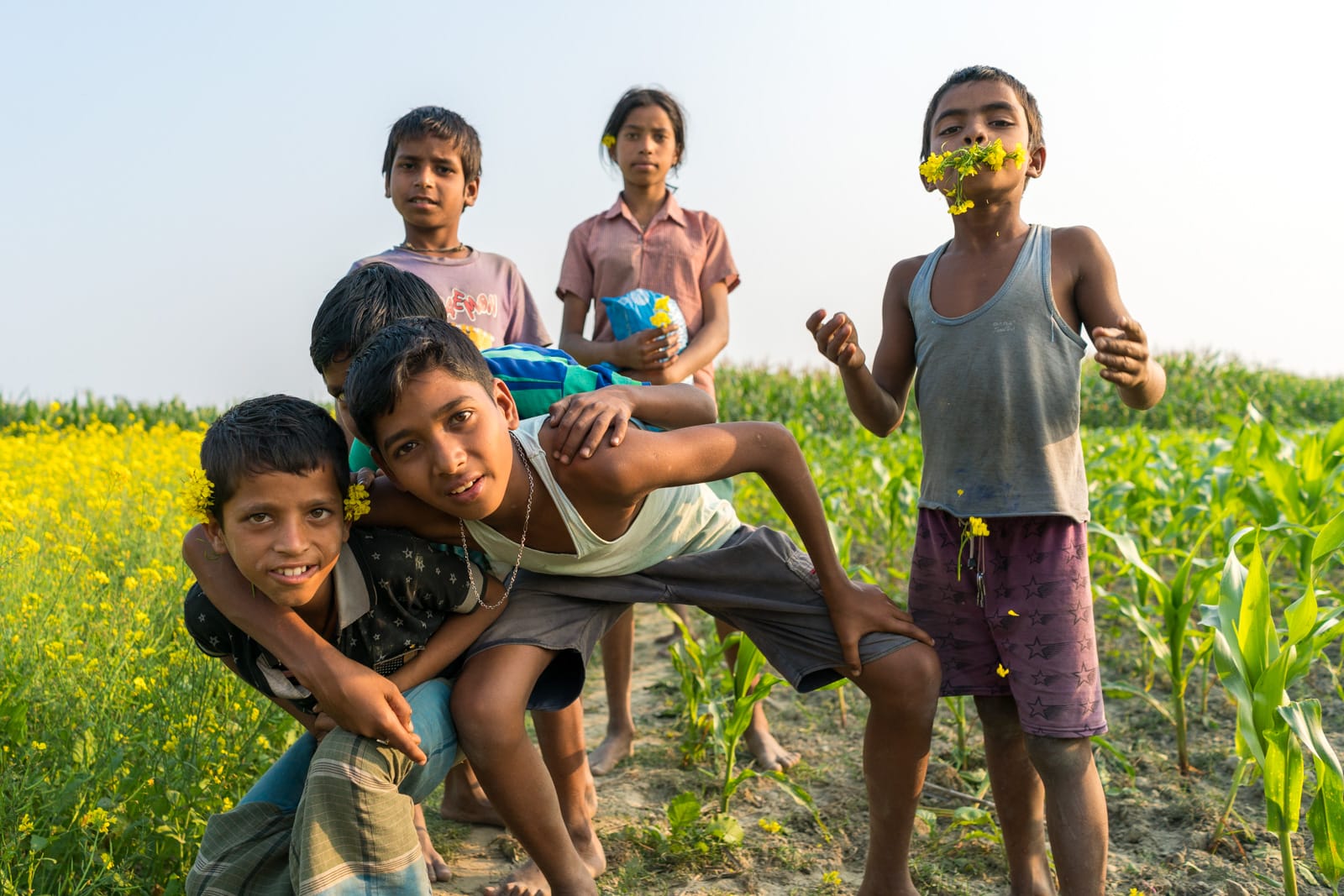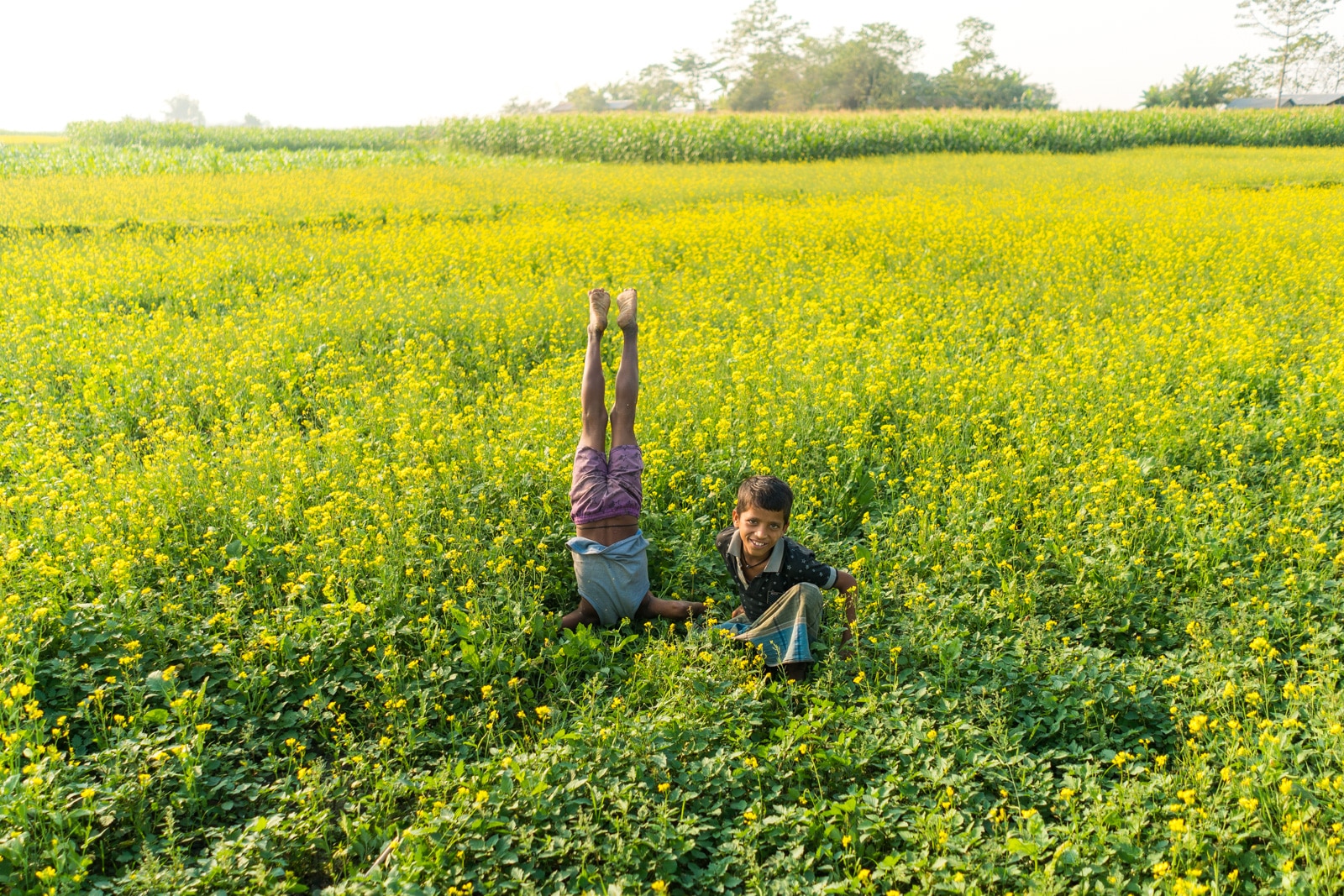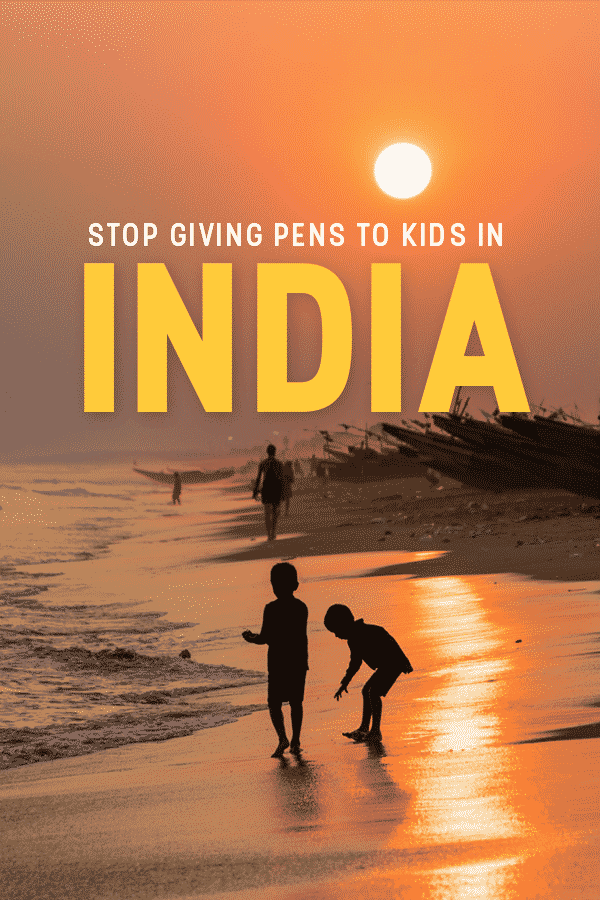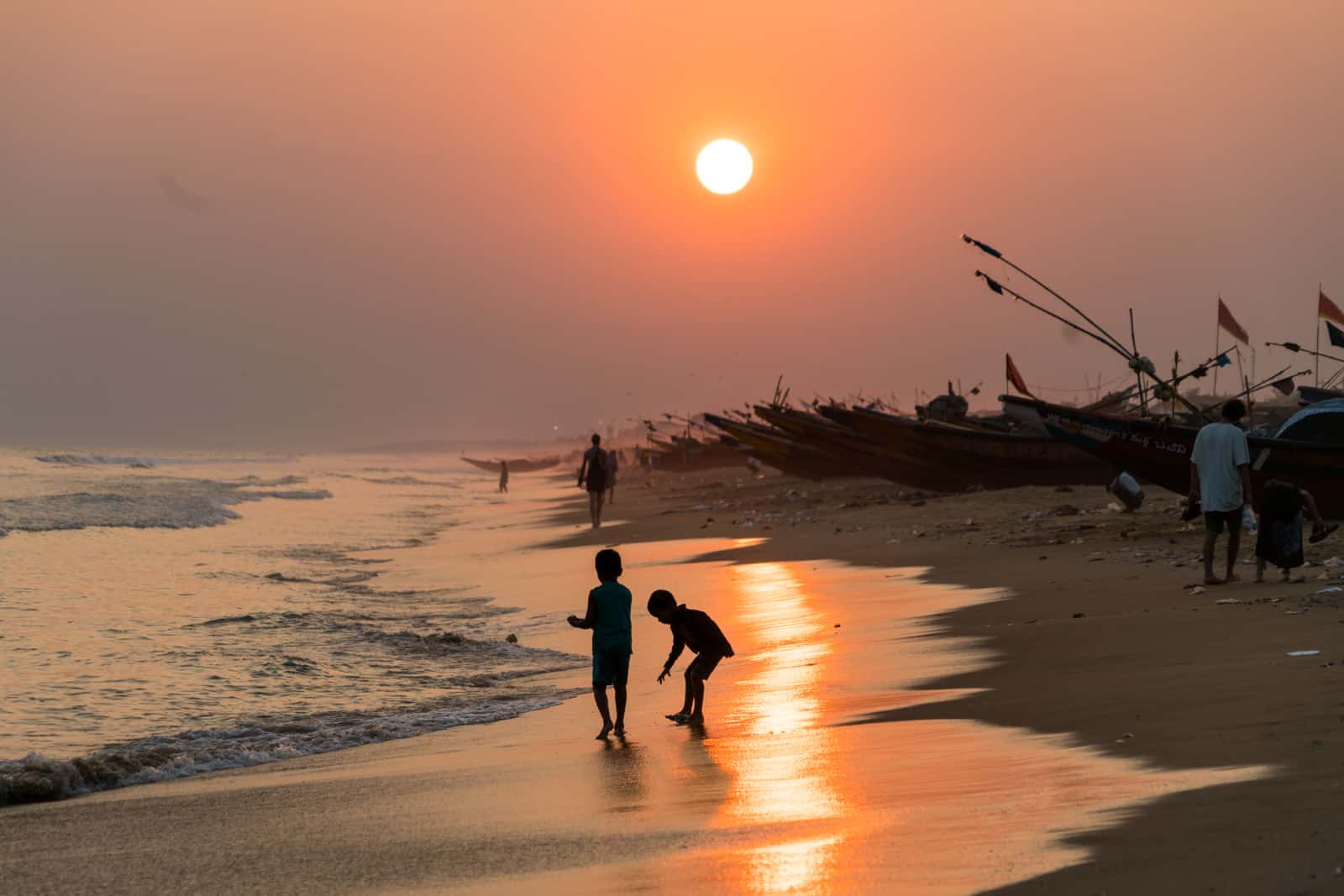Giving pens to children in India is a big no no for foreign tourists. Though it may seem an innocent act of goodwill, it has some long-lasting repercussions. Here’s why you should stop giving pens to children in India, and some alternative ways to give to children in the country.
In that moment, the child is the most adorable child in the world.
Big brown eyes, a blindingly white smile, little school uniform so perfectly pressed. Their tiny feet pound the ground as they run toward you, their backpack flapping on their back haphazardly. Other children, noticing you, begin to congregate around your legs. As they look up at you, heads just barely coming up to your belly, you can’t help but smile yourself. You’re about to experience the “real” India all those guidebooks talk about.
… then it begins.
“Pen?”
“What is your name? Give me pen!”
“No pen? Give me money!”
Like a flock of noisy seagulls, a high-pitched chorus of demands rises from the throng, and what started out as a emotional moment has ended with you being treated as a human vending machine.

PEN! PEN! PEN!
Resist and desist
It’s a common scene throughout India, as well as other countries. Big-hearted (or deep-pocketed) foreign tourists come in, encounter The Most Adorable Children Ever living in less-than-ideal conditions, and heartstrings are tugged. The tourists buy them pens, candy, some cheap toys. The children are delighted, the tourists feel like saints, everybody wins, right?
Wrong. Though intentions may be good, the repercussions are not:
- Children will expect foreigners to hand out free goods to them. There’s another word for this: begging. Are you comfortable encouraging begging?
- If begging is incentivized, children may drop out of school in favor of taking to the streets and collecting goods from foreigners. Why go to school when you can profit on the streets?
- Scams emerge where children ask tourists to buy them goods, then return the goods to the shop in exchange for a profit.
- “Begging mafias” might recruit the children to work for them. Children are often maimed as a way of making them more pitiable, and thus profitable.
Put your parenting hat on
“Oh, you’re so cold hearted,” you might be thinking, “a pen is just a little gift. Besides, they need it!”
Not convinced, eh? Let’s try another approach: imagine you’re a parent. If your child walked up to you and demanded you give them something, would you give in?
What if, when you denied their demand, they then insist you give them money?
… I’m thinking the answer is something along the lines of “Aww hell naw.” If you wouldn’t give in then, why would you do the same to someone else’s children on the street?

Photoshoot time! (With consent from their parents to both take photos and put them online.)
What you can do instead of giving pens to children in India
I’m not saying you should turn into a miser and lock your heart away forever. It’s okay to want to help out people in need—just make sure you do so responsibly. Here are 5 alternatives to giving pen to children in India:
1. Buy school supplies from a local convenience store and give them to a teacher.
This kills several birds with one stone:
- You contribute to the local economy by buying the pens locally.
- This ensures donations end up in the right hands, and prevents children from squabbling over who gets what.
- School supplies cannot be as easily misused as cash donations.
- You ultimately get to give kids pens. Wins all around!
2. Have a mini-photoshoot.
Kids everywhere in the world love to ham it up for the camera. If you have a digital camera, ask if you can take their photo—the answer will definitely be yes—and snap away! Show them the photos you take, and you’re sure to be rewarded with all kinds of giggles, squeals, and demands to take more photos.
Even better: let them take some photos, too! Just make sure they’re gentle with your camera or phone.
If you want to take it to the next level, consider getting an instant camera for those really special kids. Photos can be expensive, and many families don’t have the money or resources to have photos taken of themselves. An instant photo is a nice gift that can be cherished much more than a pen… and they’re more fun!
Tip: Try to only do this when the family is around, or when there aren’t too many children. Otherwise it may lead to some bickering about who gets to keep the photo(s) in the end.

3. Take some time to talk or teach a special high five or game.
Children might be interested in material objects, but you have something much more valuable to offer them: a chance to exercise language skills! Most are delighted to do so, and hand games and high fives are something that can easily be explained in basic English and can be used amongst themselves for days to come.
4. Go on a responsible tour that benefits the children’s community
Being a good tourist is in right now (let’s hope it’s never passé), and tour operators have been listening. “Responsible” tours ensure local communities benefit by distributing proceeds among the communities they operate in, crafting itineraries with local leaders, properly disposing of waste, etc.
One example is the New Delhi Walking Tour. Run by the Salaam Balak Trust, it provides education, shelter, and medical help to street children in Delhi.
5. Donate to an NGO or charity that works with children in India.
Sometimes, we need to accept that we have no freakin’ clue what’s best for people. And that’s okay.
There are hundreds of charities and NGOs that work to improve living conditions and education for children in India. They know what’s up, to say the least, and giving money to them can be much more effective (and efficient) than figuring out what to do yourself.
It’s important, however, to donate to organizations that have proven to be effective. To save you some time, here are several reputable Indian organizations you can donate to:
- Seva Mandir works to improve the lives of people—including children—in rural Rajasthan. This includes providing quality education and proper child care.
- Smile Foundation has a variety of aims, one of which is to provide proper education and nutrition for children in school.
- Chirag is working to improve the quality of education and general welfare of young students in the Kumaun region of Uttarakhand.
- Akshaya Patra combats malnutrition by providing mid-day meals to more than 1.7 million school children every day.
- Aarohi has a youth program that goes beyond the classroom and promotes extracurriculars like sports, trekking, and just playing outside—all essential to ensure kids stay away from crime and drugs.
Go forth, and be responsible
So ends my sermon. I know not everyone will agree with me (woe is me, I have failed), and there are other alternatives I haven’t touched upon. That’s where you come in.
What’s your opinion on the subject? Do you give to children and beggars?

Pin it!
Yay transparency! Some of the links in this post are affiliate links, which mean if you book or buy something through the link I’ll make a small commission at no extra cost to you.



I agree wholeheartedly with your post. Unfortunately I’ve encountered educated, wealthy parents who will encourage their children to ask for “toffee” or money. Bollywood pictures perpetuate this by portraying white people as incredibly wealthy, careless with their money, and daft.
The one exception to your rule is with food. If a child tells me they are hungry I will make sure they have the opportunity to eat something. Hunger is an immediate need and social reform is a slow process. If I feed a person, I choose healthy food that they can eat immediately. Buying uncooked foods or an abundance of one type of fruit does little to help.
Also, a child asking for money on their way home from school is one thing, but if you see a child who needs help, do not be afraid to call Childline (1098).
Great post! At first, I was a little skeptical but you offer really wonderful alternatives. The thought of giving away so much that people give up their education is extremely worrying.
Brilliant ! Beautifully put. I’m about to take a group to India and was wondering how to explain this subject, which is SO complicated. I go to India regularly and have had my heartstrings pulled many a time, and yes I have given money – and pens – in the past… But have long felt there’s something wrong with that and so have found a couple of ONGs and schools I trust, so I now know where the money’s going. It’s still really hard to say no to a child in the street, but I know why I’m doing it. I do still buy a chaï or banana if I’m having one and someone asks… is this bad ??
Thank you so much for helping me explain this to my group – and to myself !
ps like the idea of an instant camera 🙂
I’m glad this could clarify things a bit! Yes, it’s a very complex issue, and definitely not an easy topic to explain while people have dozens of adorable young eyes staring up at them. I’m also a bit overly cautious with buying food on the spot—I feel like it’s fundamentally not so different from giving money, and can also be exploited—but something I see others doing in India that I can get behind is to pack up all of your leftovers from restaurants (inevitable when dining in big groups!) and give them to the homeless/beggars outside.
Anyway, safe travels in India, and good luck with your tour!
As usually I found your post interesting and very informative.I will recommend your blog to my friends .Thanks for sharing with us.And keep up the good work.
You are so cool! I dont suppose I have read anything like this before. So nice to find any individual
with some authentic ideas on this subject. Realy thank you for beginning this up. This website is
something that is wanted on the internet, someone with a little originality. useful job for bringing
one thing new to the internet!
So hard when children are involved ! We were in Tavan (Sapa) this summer and disturbed by all the children running after every new tourist in town to sell them things. My daughters were heartbroken to say no and not buy anything from them. I kept telling the children that they should play, not sell (we’ve been told that they don’t during schoolyear, hopefully it’s true), and at one point I got from my luggage bubbles to blow together. We spend 30 minutes maybe playing with them, and laughting. I felt it was the right attitude to have. Still wonder and hope it was… (I did give them the bubbles! – but they had not asked for it)
I’ve not had the pleasure of traveling enough to experience this situation so I likened it to the kids lining the streets for a parade waiting for candy to be tossed from the firemen, boyscouts, the local ball all-star team and town mayor. It’s cute and all, but once in a while, somewhere, a small town newspaper headline reports someone was hit during parade. If you read the article, by the end you’ll wonder if that someone wasn’t pushed, a good article anyway. My point is that begging doesn’t sound discouraged by the influential adults in these childens’ lives. Is there a program in place to educate the adults on the lasting effects of allowing and encouraging this behavior?
Excellent article and so true. As a Canadian family, we have worked many years in india at The Rising Star Outreach in Chennai that splits its focus between vaccinations of lepers in the leper colony, (my mom is a vaccination nurse), supplying micro loans to the lepers to get them independent and self-sustaining–NO MORE BEGGING!–and then educating their children to be skilled, contributing members of society with potential college-level opportunities and Tamil/English fluency (much of this the life-long work of American Becky Douglas). Leprosy doesn’t carry over to the children through birth, FYI.
We have one mandate that is unbreakable: NO FREE HANDOUTS.
It has been painful to transition this mind-set for everyone (us and them) as sometimes we feel ‘mean’, some of us may have been tempted to bend the rules, after all, they’re lepers! or, we want to feel like the fairy godmother, but having stuck to this at the insistence of our Indian partners, the success has been evident.
A quick illustrative story and what we did about it:
One day in this kindergarden, the teacher gathered the children together to draw with crayons. A little boy (we’ll call him Dev) picked up a crayon and then would break it. The teacher would give him another, and he broke that one too. The teacher asked why he was breaking the crayons and he replied, “It’s doesn’t matter, the Americans will give us more.”
O-KAY. That was a revelation.
This is what was created out of that revelation.
The ‘Star’ Store:
All pens, crayons and ‘frills’ like stickers etc, and all gifts sent to children by sponsors will go to the ‘Star’ Store, set up like a little convenience store. There, these items can be purchased by the children using their accumulated ‘stars’. The children earn these ‘stars’ in one of 5 ways and they can earn up to 5 stars a day for the following: making their bed, doing homework, help tidying up the dormitories, a good or kind deed to a fellow student or individual, and being helpful in the classroom.
They go ‘shopping’ at the end of the week with their ‘stars’ to the Star Store. Like money, a child can buy 2 lollipops for 1 star or a beautiful donated pen for a 1 star, or they can save their ‘stars’ for something more significant like a small glittery pencil case or makeup purse for 15 stars, or a donated volleyball for 40 stars.
This model has also eliminated jealousy and bitterness that some ‘lucky kids’ have sponsors who send gifts meanwhile other kids without sponsors (or gifting sponsors) go without. This levels the field and makes everything accessible based on the child’s work/behaviour ethic. It must be earned.
The success with this idea has been outstanding, and these kids are now teaching their parents about the value and rewards of work!!
Nothing of value is appreciated if it is acquired for free. The feeling of effort, motivation, and ‘I can do this!’ is the best payout there is.
Most of the points you make are very agreeable. However, the photograph section made me feel a little uncomfortable. There is an expectation in western society that any child’s photo should only be taken so long as an adult/caretaker provides permission. Although, this specific moment of a child begging for a pen doesn’t fit the conventional “asking for consent” situation it is important to disclose our own intentions for taking those. I am assuming that the photos you have included in this wonderful blog were consented with knowledge of its use and impact. There is no greater harm than saying no to child exploits through begging and alternately showcasing that child’s photo on the internet associated to poverty and begging. It is definitely a thought to think about not exclusively for blog writers but every other tourist who asks for “permission” from a kid or their parents without disclosing the intentions of their use for socials/websites.
Thank you for pointing that out. I also cringed when I came back to this after seeing your comment in my inbox—I’ve learned a lot about ethical photography since writing this back in 2016! Ahh! You’re right, it could be damaging to include their photo alongside comments about begging. I’ve replaced the specific photo in question and removed ones directly associated to begging, and changed the other photos to less direct ones or photos that I had explicit consent to use online.
This was such a good article!!! I had no idea that begging was such a big deal in India. I’ll definitely be keeping these tips in mind when we travel there.